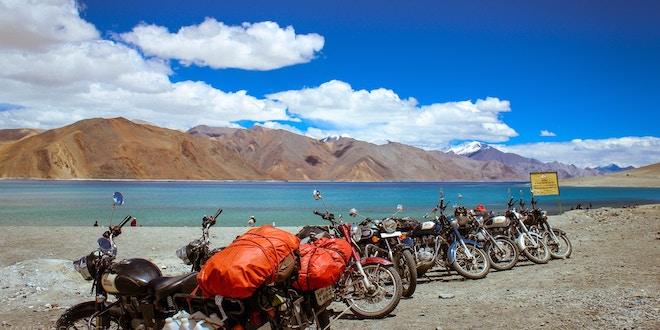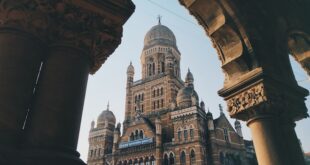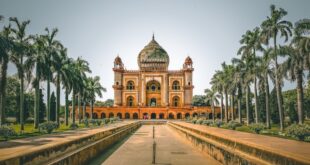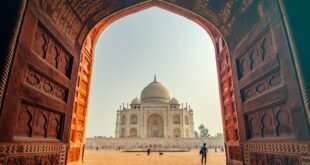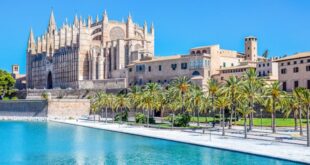Last Updated on October 27, 2023
Ladakh is a state in Northern India, situated in the Himalayas. It was once a Buddhist kingdom and is well-known for its peaceful monasteries, stunning mountains, and bright blue lakes. People also call Ladakh “Little Tibet”.
Ladakh’s neighbors include Tibet to the east, Kashmir to the west, China’s Xinjiang province to the north, Pakistan to the northwest, and Himachal Pradesh’s Lahaul and Spiti to the south.
Leh, which serves as the capital of Ladakh, is the biggest town and the primary center for all travelers. It’s positioned at an elevation of 3,500 meters and historically played a crucial role as a trading hub along the Silk Route, serving as a key stop for merchants on the Leh-Yarkand route, which now falls within China’s Xinjiang Uyghur Autonomous Region.
How to reach Ladakh
Ladakh can be reached by both air and road. Daily direct flights from New Delhi provide easy access to the region. Additionally, Ladakh is connected by road to Srinagar and Manali, but please note that these roads become impassable in the winter due to heavy snowfall. The Leh-Manali Highway, which is 490 kilometers long, typically opens from May to October. This road offers an exhilarating experience with its sharp turns and bends, and it requires travelers to cross three high mountain passes – Rohtang La (3,980 meters), Baralacha La (5,030 meters), and Taglang La (5,328 meters) – in order to enter Ladakh. On the other hand, the Leh-Srinagar road takes you through stunning mountain landscapes and offers a less exhausting journey compared to the Manali route.
Best time to visit Ladakh
The best time to visit Ladakh is from April through October. Ladakh, being a high-altitude cold desert situated in the rain shadow of the Indian Himalayas, remains dry and sunny because it’s shielded from monsoon rain clouds. During the winter, when the Leh-Manali and Leh-Srinagar roads are closed due to heavy snowfall, airlines become crucial for the region’s connectivity. Winter is also an excellent time to visit, as the snow-covered mountains offer a picturesque landscape and a plethora of outdoor activities. The Chadar trek and Snow Leopard sighting trek are particularly popular during this season.
How to travel around
Public transportation in Leh is quite limited. The buses operating in Leh and its surrounding areas are typically privately owned, resulting in an often irregular bus schedule. For more remote and distant locations, there are government-run buses that operate on both a daily and weekly basis, depending on the area.
Taxis prove to be the most convenient mode of transportation for getting around Leh. For instance, you can rent a car with a driver for a multi-day excursion to destinations like Nubra Valley and Pangong Lake, a journey typically spanning 3 or 4 days. If your travel plans take you off the well-trodden path or involve specific activities like rafting, trekking, or mountaineering, it’s advisable to get in touch with a reputable travel agency in Leh. They can assist in arranging all the necessary permits and logistics to ensure a smooth and enjoyable experience.
Main places to see
1. Monasteries of the Indus valley
Ladakh’s predominant population practices Buddhism, and the region is adorned with white-washed stupas and monasteries representing various Buddhist traditions. Overlooking Leh town, the Leh Palace stands atop a hill, offering panoramic views of the town and the surrounding mountains. Just above the palace, you’ll find the Namgyal Tsemo monastery, a 15th-century structure featuring a 3-story-tall Maitreya Buddha statue, visible from every corner of the town.
Shey, once Ladakh’s summer capital, is known for its magnificent copper Buddha statue covered in gold leaf, located within Shey Palace. Thiksey monastery often captures attention due to its resemblance to the Potala Palace in Lhasa, Tibet. This monastery is famous for its towering 15-meter-high Maitreya Buddha statue.
Among Ladakh’s monastic treasures, Hemis stands out. Located 45 kilometers from Leh, it is one of the largest and wealthiest monasteries in the region. Hemis is renowned for its mask dance festival, celebrated annually on the birth anniversary of Guru Padmasambhava.
2. Nubra valley
Nubra Valley, often referred to as “the valley of flowers,” stands out as one of Ladakh’s major attractions. It’s nestled at an altitude of 3,050 meters, slightly lower than Leh. The gateway to the renowned Siachen Glacier, the highest battlefield located to the north of the valley, is the Khardung La pass. Additionally, the Karakoram Pass is situated to the northwest.
Among the villages in Nubra, Hunder and Turtuk are the most frequented by visitors. Hunder is renowned for its picturesque sand dunes and the unique double-humped Bactrian camels. On the other hand, Turtuk is known for its Balti tribe, which still adheres to age-old customs, and it was opened to tourists in 2010. The Diskit Monastery, the largest in the valley, is a mere 7 kilometers from Hunder village.
3. Pangong and Tsomoriri lakes
Pangong and Tso Moriri, the high-altitude lakes, are Ladakh’s most sought-after destinations. Pangong Lake, perched at an elevation of 4,300 meters, is a 5-hour drive from Leh. Stretching over 135 kilometers, this mesmerizing lake extends into the Tibetan Autonomous Region, with nearly 60% of its expanse residing there. It serves as a vital breeding ground for numerous bird species, including a variety of migratory birds.
Tso Moriri Lake, located at 4,500 meters in the southeast of Leh, is an important breeding ground for the endangered black-necked crane. In this valley, you’ll find nomadic communities moving with their herds of sheep, goats, and yaks, leading a pastoral way of life. This lake, spanning a total length of 20 kilometers, ranks among the world’s highest brackish water lakes.
 Travel for Food Hub The Food Blog for Travel Lovers
Travel for Food Hub The Food Blog for Travel Lovers

